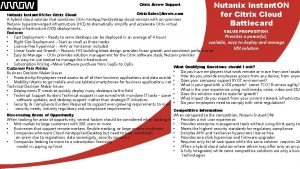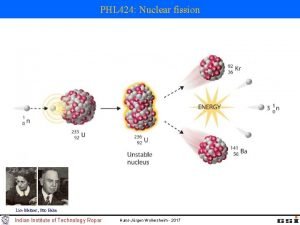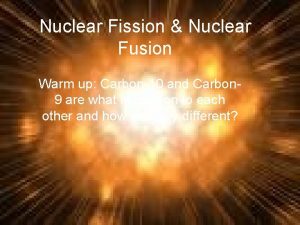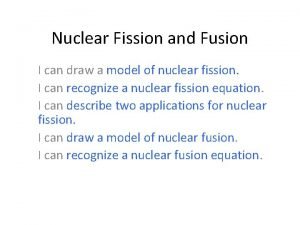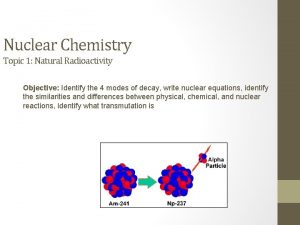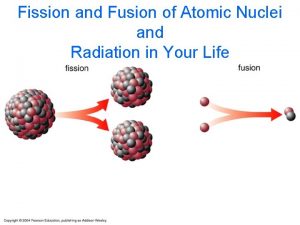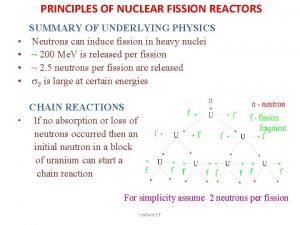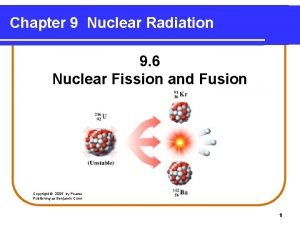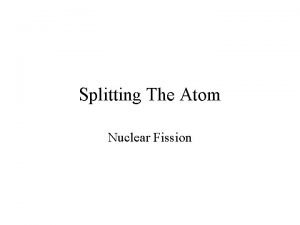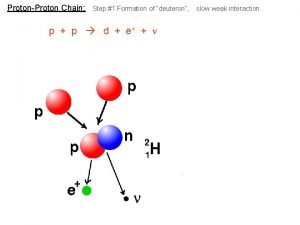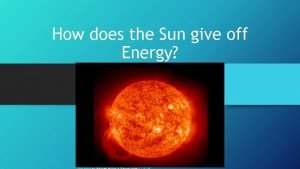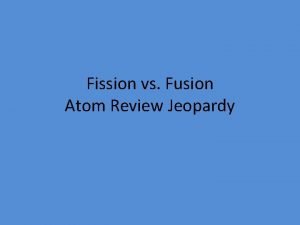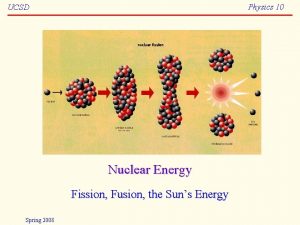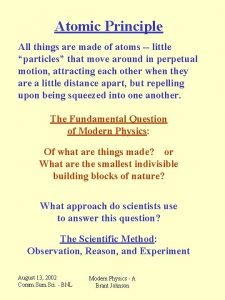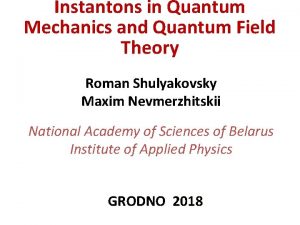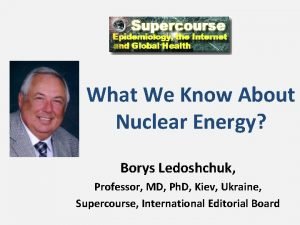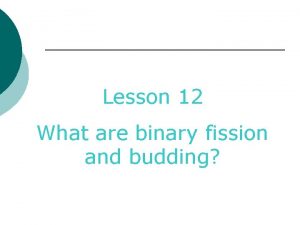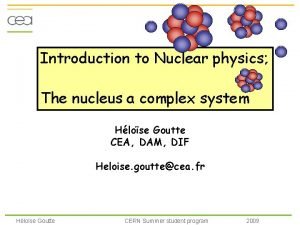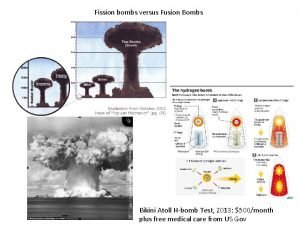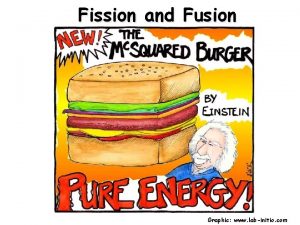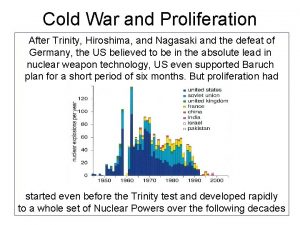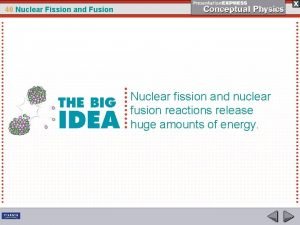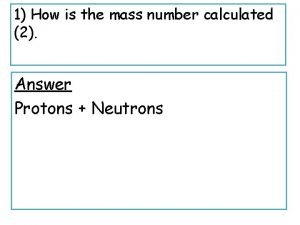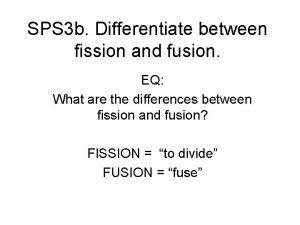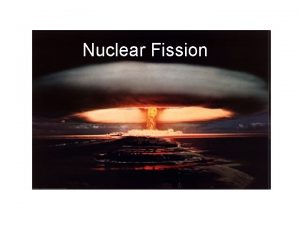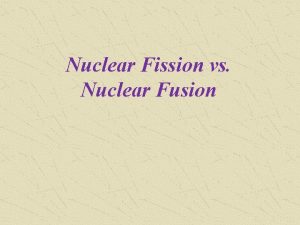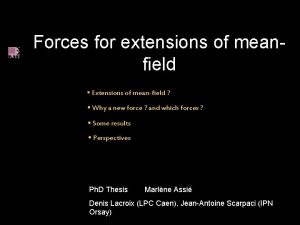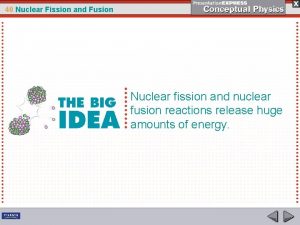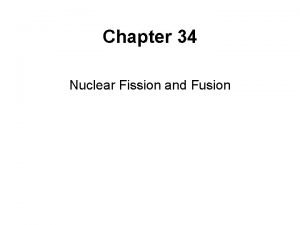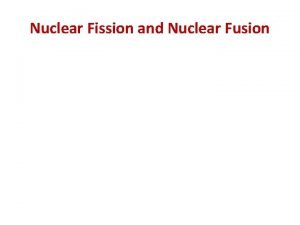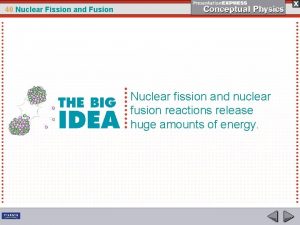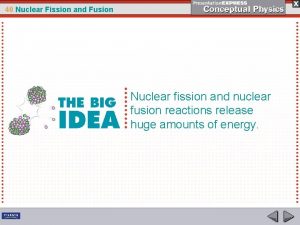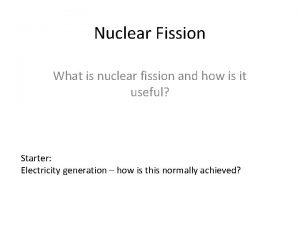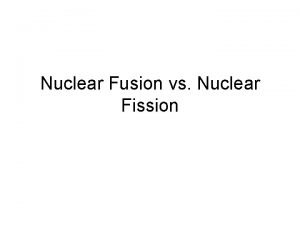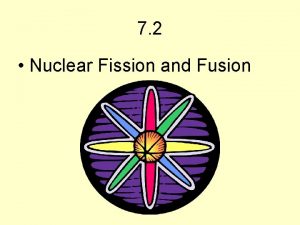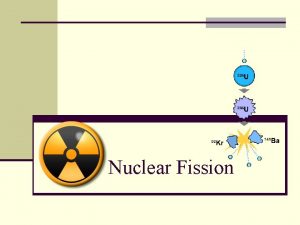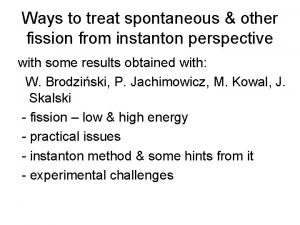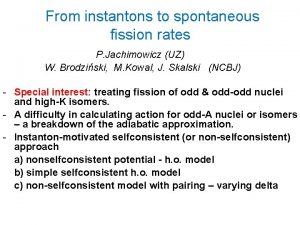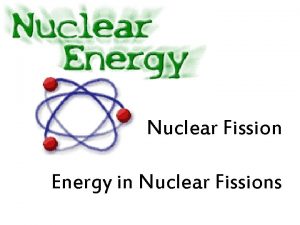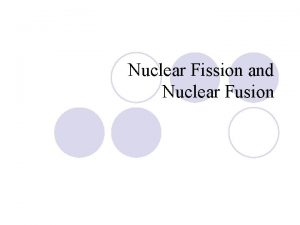Nuclear fission with meanfield instantons 1 Instanton method






![There are two sets of Slater determinants: GCM energy kernel on [0, T/2] There are two sets of Slater determinants: GCM energy kernel on [0, T/2]](https://slidetodoc.com/presentation_image/e0badfd42a233ea819d5e25cb61a8798/image-7.jpg)




























- Slides: 35

Nuclear fission with mean-field instantons: 1) Instanton method as the Gamow approach to quantum tunneling in TDHF. 2) General remarks 3) Various forms of action & equations 4) Variational principle 5) Coordinate and momenta representation 6) Adiabatic limit = ATDHF 7) GCM mass does not respect instanton constraints 8) Inclusion of pairing Conclusions

Gamow method: motion with imaginary momentum. Formally: In general: the stationary phase approximation to the path-integral expression for the propagator TD variational principle Decay rate proportional to: with S action for the periodic instanton called bounce.

In field theory: S. Coleman, Phys. Rev. D 15 (1977) 2929 In nuclear mean-field theory: S. Levit, J. W. Negele and Z. Paltiel, Phys. Rev. C 22 (1980) 1979 Some simple problems solved: G. Puddu and J. W. Negele, Phys. Rev. C 35 (1987) 1007 J. W. Negele, Nucl. Phys. A 502 (1989) 371 c J. A. Freire, D. P. Arrovas and H. Levine, Phys. Rev. Lett. 79 (1997) 5054 J. A. Freire and D. P. Arrovas, Phys. Rev. A 59 (1999) 1461 J. Skalski, Phys. Rev. A 65 (2002) 033626 No connection to other approaches to the Large Amplitude Collective Motion.


The Eq. (1) without the r. h. s. conserves E and The full Eq. (1) preserves diagonal overlaps, the offdiagonal are equal to zero if they were zero initially. The boundary conditions: This + periodicity: Decay exponent:

To make Eq. (1) local in time one might think of solving it together with: However, this is the equation of inverse diffusion – highly unstable.
![There are two sets of Slater determinants GCM energy kernel on 0 T2 There are two sets of Slater determinants: GCM energy kernel on [0, T/2]](https://slidetodoc.com/presentation_image/e0badfd42a233ea819d5e25cb61a8798/image-7.jpg)
There are two sets of Slater determinants: GCM energy kernel on [0, T/2]


It follows from (A) that The drag is necessary and the result of the dragging is fixed. The measure provided by S is the scalar product of the dragging field with the change induced in the dragged one. Thus, one may expect a minimum principle for S that selects the bounce. What is left is to fix the constraints.

Antihermitean part of h = Thouless-Valatin term. Within the density functional method the generic contribution to the antihermitean part of h comes from the current j: (note that: and this differs by a factor (-i) with respect to the real-time TDHF). As a result, the related time-odd contribution to the mean field becomes: and appears as soon as the real parts of start to differ.

Definition of a coordinate along the barrier, say Q: in general. Neither Q nor q are sufficient to label instanton: it depends also on velocity; even for the same q (or Q)

Collapse of the attractive BEC of atoms


leave S invariant; The equation changes:

N invertible,

There are various representations of bounce with different overlaps

If fulfil equations (A) with If energy is kept constant

Since Constraints: Boundary conditions E=const. Fixed overlaps Set (A) of equations. Then S minimal for bounce

Time-even coordinates and time-odd momenta:

Similarity to cranking, but the self-consistency changes a lot.

Adiabatic limit: similar to ATDHF (M. J. Giannoni and P. Quentin, Phys. Rev. C 21 (1980) 2060 : but there is no density operator for instanton.


connection with ATDHF


GCM results from energy condition and lack of any dependence on velocity Integrand:


Including pairing:








Problems: - Finding solution -Odd particle number systems - Phases (? )
 Nutanix instanton
Nutanix instanton Nuclear transmutation equation
Nuclear transmutation equation Fussion vs fission
Fussion vs fission Nuclear fission lise meitner
Nuclear fission lise meitner Are nuclear power plants fission or fusion
Are nuclear power plants fission or fusion Application of nuclear fission
Application of nuclear fission Fission and fusion similarities
Fission and fusion similarities Is the sun fusion or fission
Is the sun fusion or fission Fission vs fusion nuclear
Fission vs fusion nuclear Nuclear fission explanation
Nuclear fission explanation Nuclear fission and fusion webquest answer key
Nuclear fission and fusion webquest answer key Nuclear fusion radiation
Nuclear fusion radiation Nuclear fission
Nuclear fission Fission reaction
Fission reaction Geiger counter
Geiger counter Nuclear fission formula
Nuclear fission formula Nuclear fission vs fusion venn diagram
Nuclear fission vs fusion venn diagram Nuclear energy in physics
Nuclear energy in physics Nuclear fission
Nuclear fission Instantons in quantum mechanics
Instantons in quantum mechanics Lesson 15 nuclear quest nuclear reactions
Lesson 15 nuclear quest nuclear reactions Fisión nuclear vs fision nuclear
Fisión nuclear vs fision nuclear Symposium advantages and disadvantages
Symposium advantages and disadvantages Fission reactor nuclearcraft
Fission reactor nuclearcraft Examples of asexual reproduction
Examples of asexual reproduction Fission vs budding
Fission vs budding Spontaneous fission definition
Spontaneous fission definition Binary fission vs conjugation
Binary fission vs conjugation Fission vs fusion
Fission vs fusion Fission equation
Fission equation Fission vs fusion
Fission vs fusion What is the advantage of binary fission
What is the advantage of binary fission Fission vs fusion energy output
Fission vs fusion energy output How is mass number calculated
How is mass number calculated Compare and contrast fission and fusion.
Compare and contrast fission and fusion. Transverse binary fission
Transverse binary fission
